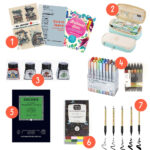I. Understanding Recycling: The Process and Benefits
II. What is Upcycling? Creative Repurposing Explained
III. Key Differences Between Upcycling and Recycling
Understanding Recycling: The Process and Benefits
Recycling is a fascinating process, and it’s one of the simplest ways we can contribute to a healthier planet. But what exactly does it involve, and why should we care? Let’s dive in!
What is Recycling?
At its core, recycling is the process of collecting materials that would otherwise be discarded and turning them into new products. It’s like giving a second life to items such as plastic bottles, paper, and metal cans. This not only helps to reduce waste but also conserves natural resources and energy.
The Recycling Process
So, how does recycling actually work? Here’s a quick overview of the steps involved:
- Collection: This is where it all begins! Recyclables are gathered through curbside pickups, drop-off centers, or recycling programs.
- Sorting: Once collected, materials are sent to recycling facilities, where they are sorted by type. This often involves sophisticated machinery as well as a good ol’ human touch.
- Cleansing: Many materials need to be cleaned to remove any contaminants. This step is crucial because impurities can affect the quality of the final product.
- Processing: After cleaning, the materials are processed into raw materials. For instance, plastics are melted down and formed into pellets, while paper is pulped and dried.
- Manufacturing: The processed materials are then used to create new products. This could be anything from new containers to fabrics!
- Purchasing Recycled Products: Finally, it’s essential for consumers to choose products made from recycled materials, completing the cycle and encouraging more recycling efforts.
Benefits of Recycling
Recycling isn’t just a trend; it comes with a treasure trove of benefits that make it worthwhile for everyone. Here are some key advantages:
- Conserves Resources: Recycling reduces the need for raw materials, helping to preserve natural resources like trees, water, and minerals.
- Saves Energy: The recycling process typically uses less energy compared to producing new products from scratch. For instance, recycling aluminum saves up to 95% of the energy required to create new aluminum from bauxite ore!
- Reduces Waste: By recycling, we can significantly decrease the amount of waste that ends up in landfills, helping to minimize environmental pollution.
- Encourages Economic Growth: The recycling industry creates jobs and contributes to local economies. It’s a win-win situation!
- Protects the Environment: Less waste and lower energy consumption lead to reduced greenhouse gas emissions, which helps combat climate change.
Getting Involved
Now that you know the ins and outs of recycling, it’s time to get involved! Start by checking what materials your local program accepts and make a conscious effort to sort your waste. Remember, every little bit counts! By choosing to recycle, you’re part of a global movement towards sustainability and a brighter future for our planet.
What is Upcycling? Creative Repurposing Explained
Have you ever looked at an old wooden pallet or a pair of worn-out jeans and thought, “There’s got to be more to this than just throwing it away?” If so, you’re on the right track to discovering the art of upcycling! Upcycling is a creative way to give new life to items that might otherwise end up in a landfill, transforming them into something more valuable and often more beautiful.
So, What Exactly is Upcycling?
At its core, upcycling is about taking something that’s no longer useful in its original form and reimagining it into something new and functional. Unlike recycling, where materials are broken down and remade into something entirely different, upcycling maintains the essence of the original item. It allows you to tap into your creativity and make unique pieces that tell a story. Here are some key points about upcycling:
- Creative Expression: Upcycling is a fantastic way to express your individuality. You can customize items to reflect your personal style, making your home or wardrobe truly one-of-a-kind.
- Environmental Impact: By upcycling, you’re helping to reduce waste and lessen your carbon footprint. Each item you repurpose is one less item in the landfill!
- Cost-Effective: Upcycling can save you money. Instead of buying new decor or clothing, you can transform old items, making it a budget-friendly option.
Fun Ideas for Upcycling
If you’re itching to get started, here are some fun and easy upcycling projects to inspire your creativity:
- Furniture Makeover: Have an old chair or table? A fresh coat of paint, new upholstery, or some creative stenciling can completely change its look.
- Clothing Revamp: Instead of tossing those jeans with a hole in them, consider turning them into a trendy tote bag or a stylish pair of shorts.
- Planters from Tin Cans: Those empty tin cans can be transformed into charming planters! Just paint them up, add drainage holes, and fill with your favorite succulents.
Upcycling Tips for Success
Ready to dive into the world of upcycling? Here are some tips to help you get started:
- Gather Materials: Start collecting items around your home that you no longer use but can be transformed. Think old furniture, glass jars, or even scrap fabric.
- Research and Plan: Look online for inspiration and tutorials. Pinterest and YouTube are treasure troves of upcycling ideas!
- Don’t Be Afraid to Experiment: Upcycling is all about creativity, so don’t stress! Sometimes the most unexpected ideas lead to the best results.
Upcycling is not just a trend; it’s a movement that encourages sustainability and creativity. So next time you’re about to toss something out, ask yourself: “How can I turn this into something fabulous?” Happy upcycling!
Key Differences Between Upcycling and Recycling
Hey there! Have you ever wondered about the differences between upcycling and recycling? You’re not alone! These terms often get tossed around interchangeably, but they actually refer to two distinct processes. Let’s dive into what sets them apart and why understanding these differences is super important!
1. The Basic Definitions
First things first, let’s clarify what each term means:
- Recycling: This is the process of taking materials that would otherwise be thrown away and transforming them into new products. Think of it as a way of reprocessing materials to make them useful again.
- Upcycling: Upcycling, on the other hand, involves taking unwanted items and creatively repurposing them into something of higher value or quality. It’s all about using your imagination to give new life to old things!
2. The Process Involved
When you recycle, there’s usually a lot of behind-the-scenes magic going on. Here’s a simple breakdown of what happens:
- Collection: Materials are collected from recycling bins or centers.
- Sorting: These materials are sorted into categories like paper, plastic, and metal.
- Processing: Once sorted, they’re cleaned and processed into raw materials.
- Manufacturing: Finally, these raw materials are transformed into new products.
In contrast, upcycling is much more personal and hands-on. It involves:
- Finding: Locating items that you no longer want or need.
- Envisioning: Imagining a new purpose for these items.
- Creating: Using craft skills or creativity to turn the old item into something new and useful.
3. The Environmental Impact
Both recycling and upcycling have positive impacts on the environment, but they do so in different ways:
- Recycling: Helps reduce waste in landfills and conserves natural resources by reusing materials.
- Upcycling: Reduces waste as well, but also encourages creativity and resourcefulness. It often produces unique items that can be cherished or sold, promoting a culture of sustainability.
4. Creativity vs. Standardization
Another interesting difference is in the creative aspect:
- Recycling is often a standardized process, governed by municipal guidelines and industry standards.
- Upcycling, however, is all about personal expression! There are no rules, and each creation is as unique as the person who made it.
Conclusion
So, whether you’re diving into the recycling bin or getting crafty with upcycled materials, both practices play crucial roles in reducing waste and promoting sustainability. The key takeaway? Embrace both methods! You can recycle responsibly while also letting your creativity shine through upcycling. Happy crafting and recycling!








Comments